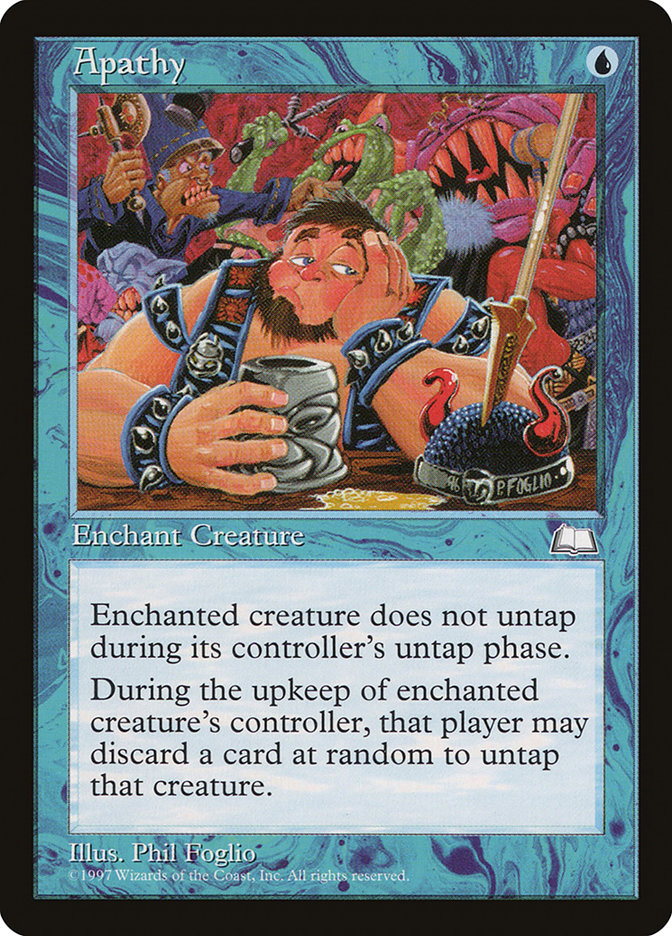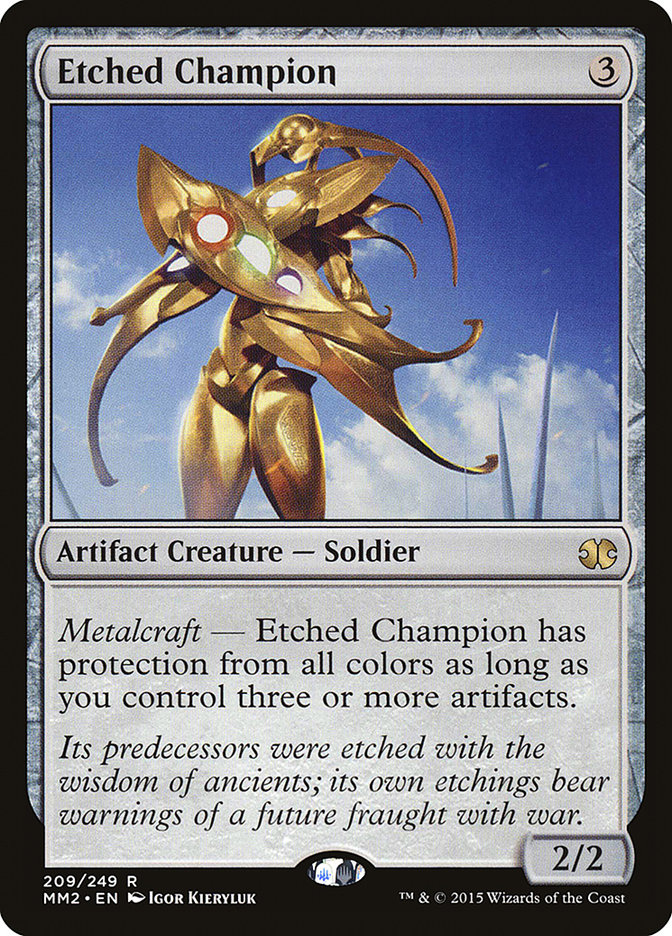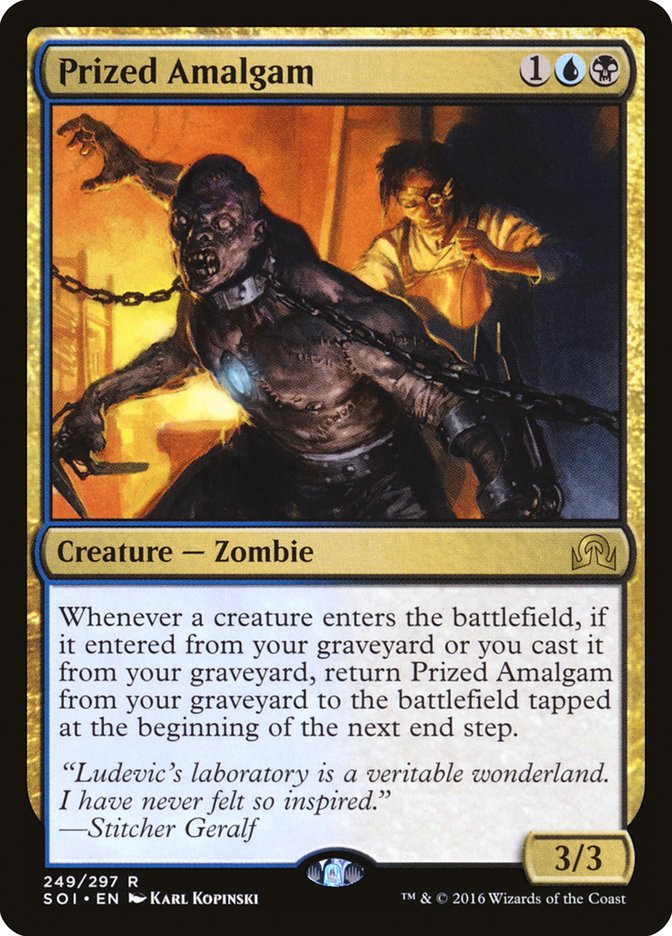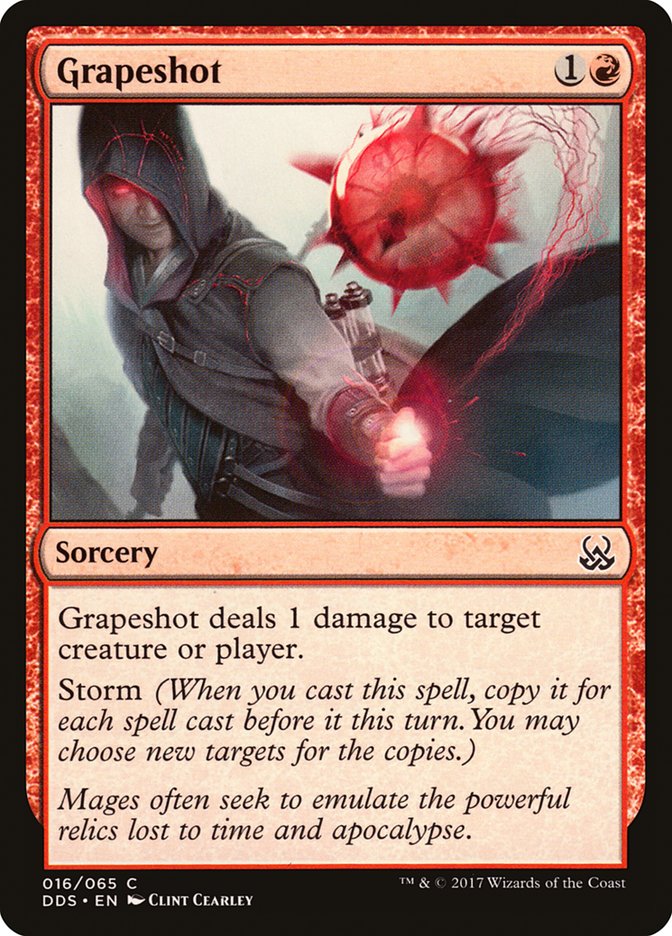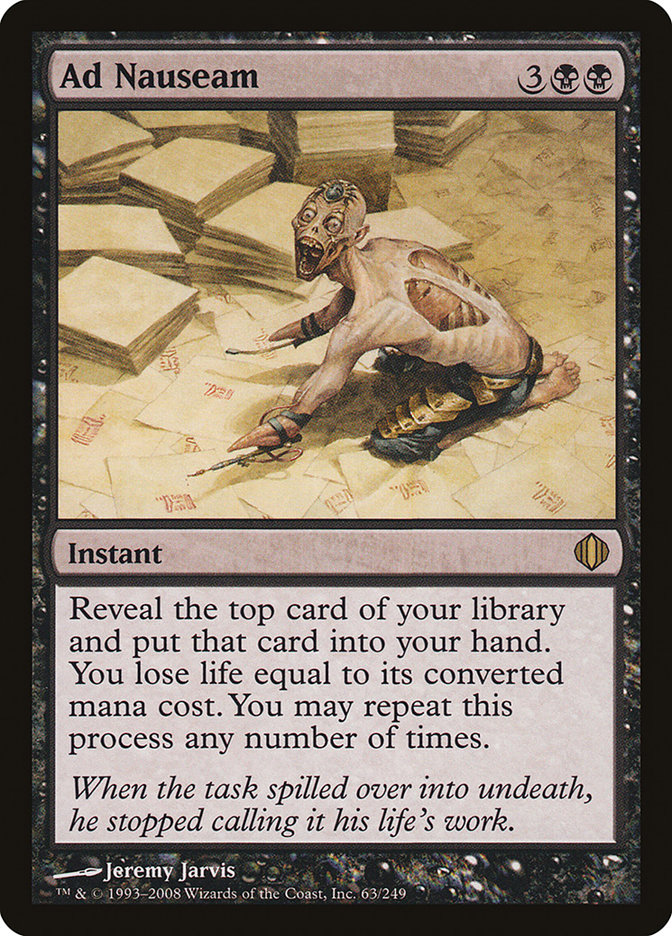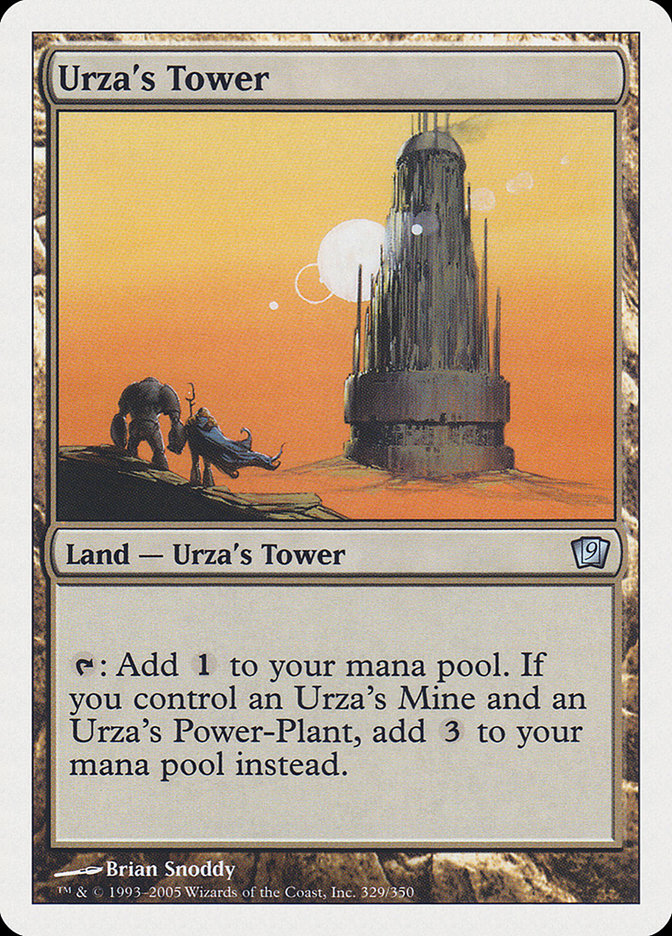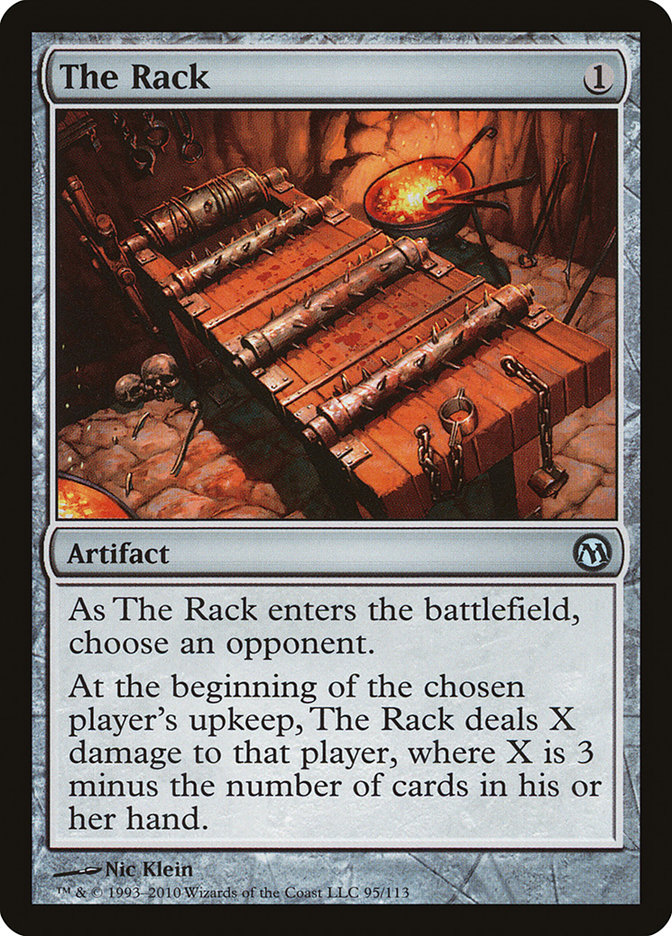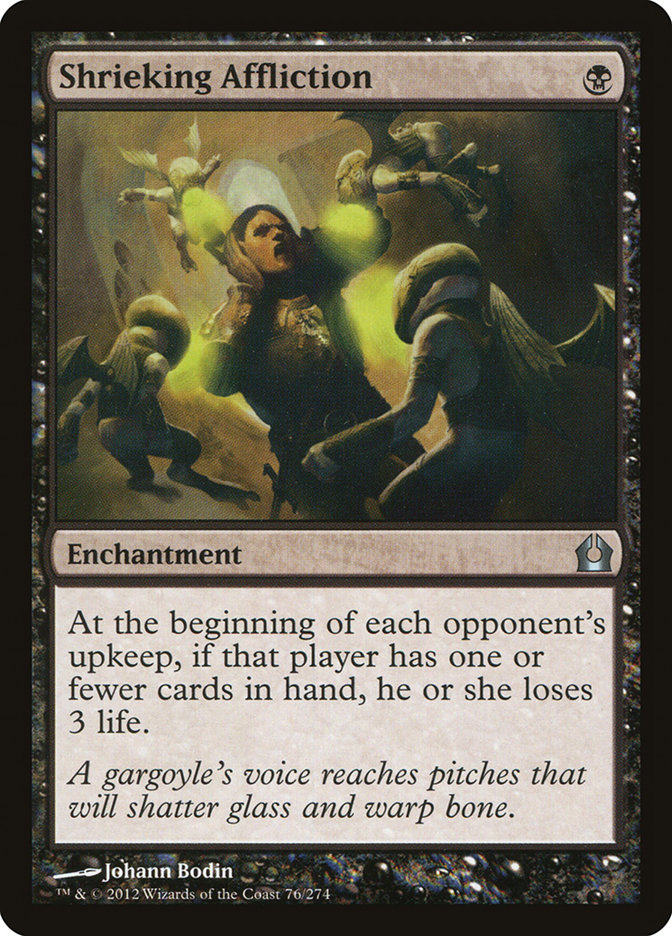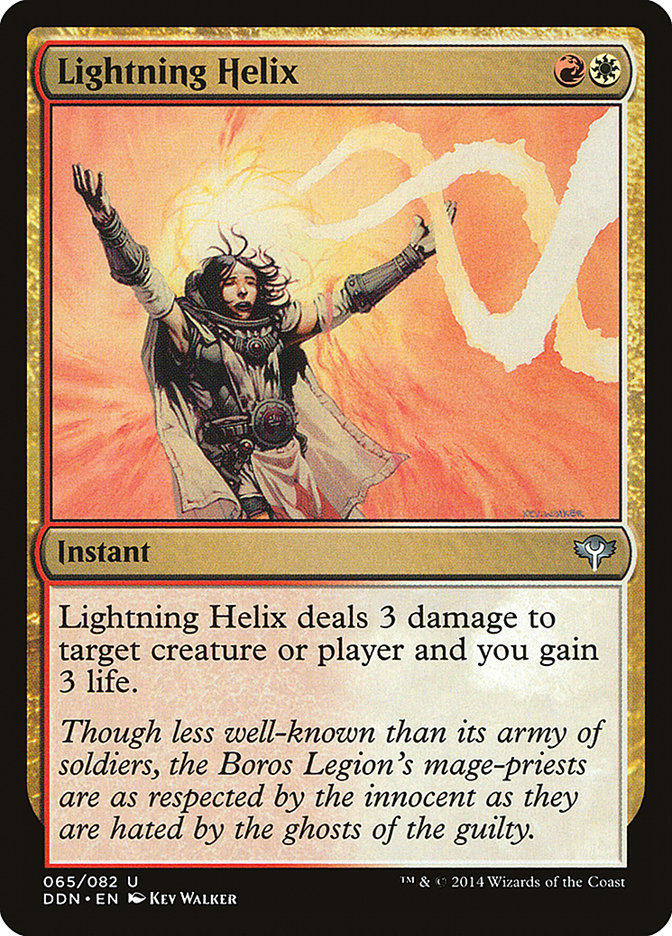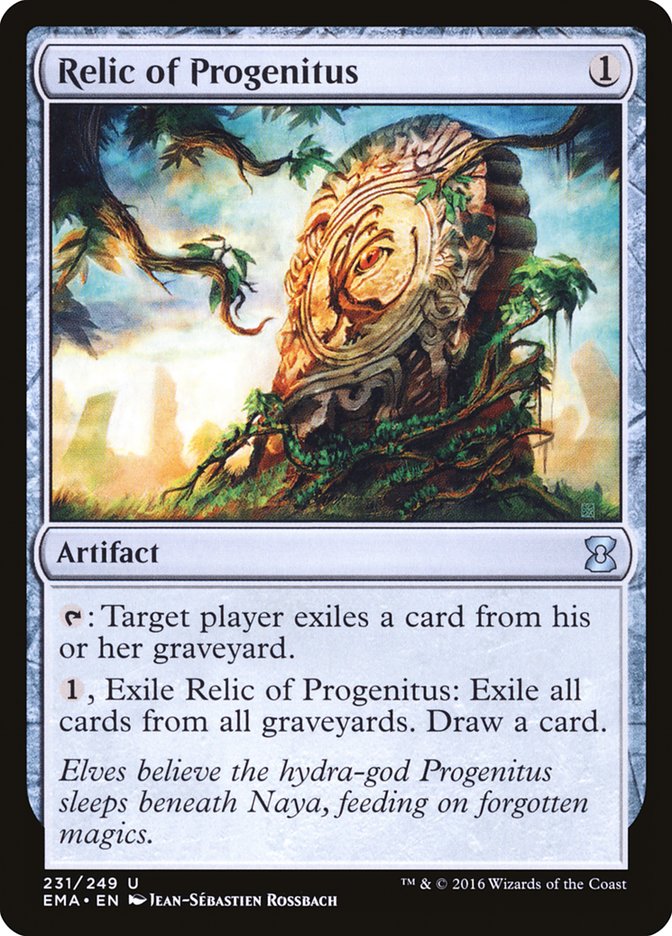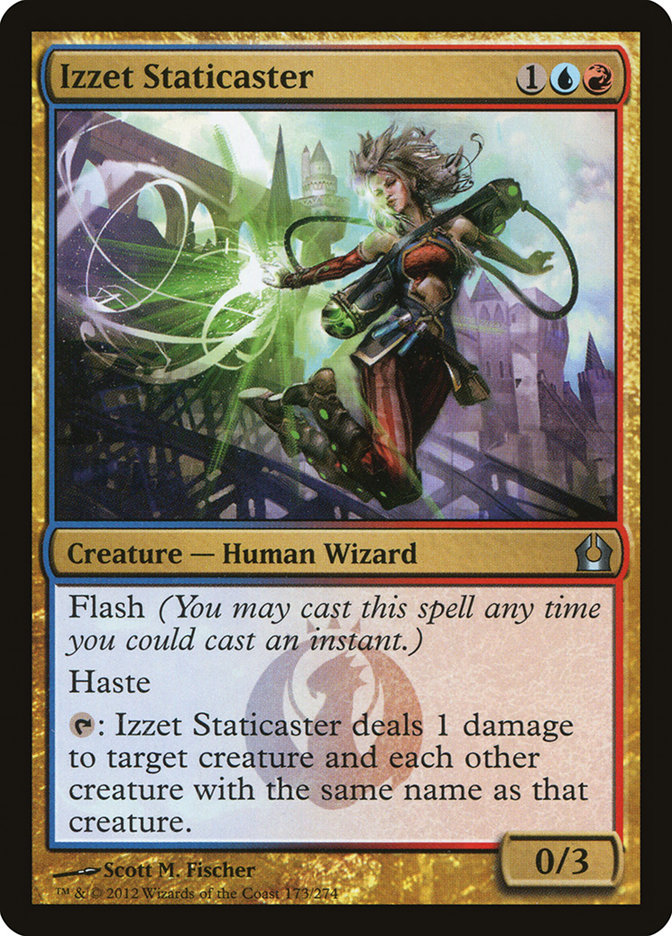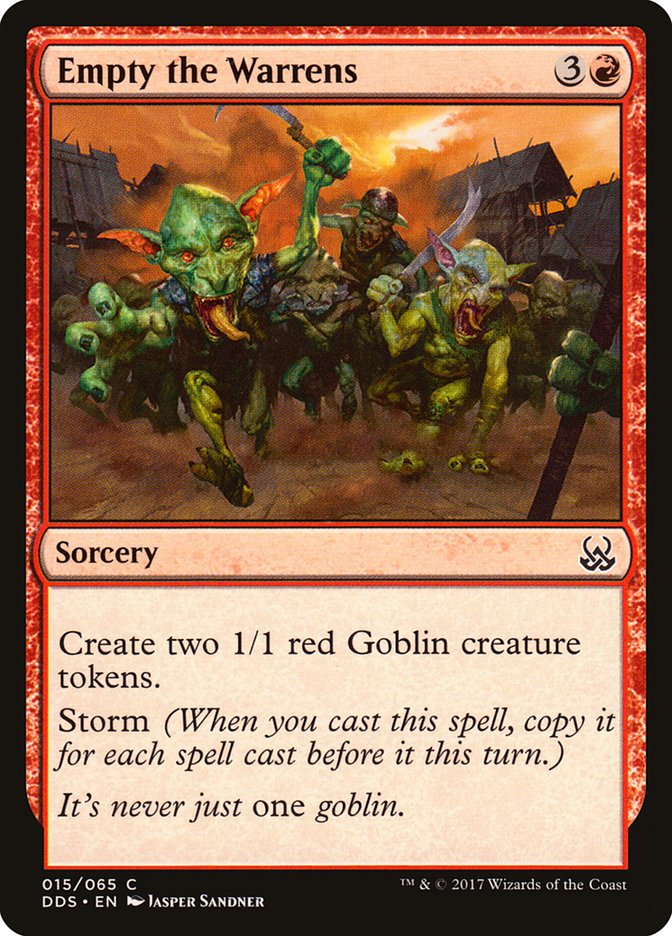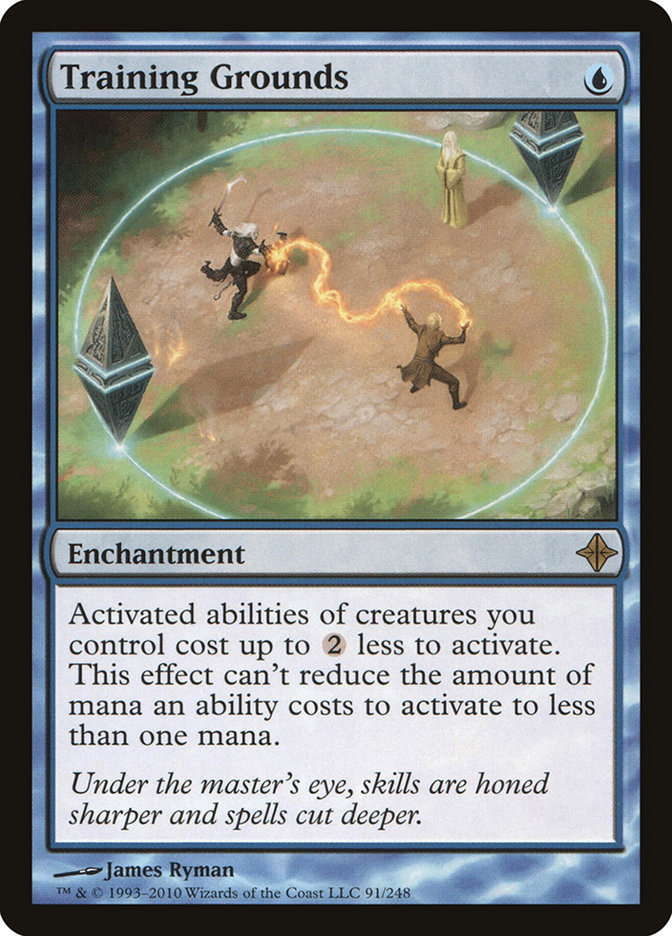There’s been a lot of talk lately about how “good” of a format Modern is. Is it non-interactive and frustrating?
Is it wildly diverse and healthy?
Frankly? I don’t care.
As a player, it’s my job to prepare for my upcoming events and perform the best I can in them. Discussion about the health of formats and possible ways to improve them is fantastic, but it does nothing to improve your win percentage in your upcoming tournaments. You can shout until you’re blue in the face that “Blood Moon is stupid and unfun!” That doesn’t mean all of your lands aren’t going to be Mountains for the rest of the game.
Compared to Standard, Limited, older formats like Extended, or even Legacy, Modern is by far the most hostile and volatile format. There are numerous viable decks, with many of them featuring linear elements that are hard to deal with without the proper tools. There are certainly a fair amount of blowout games, many of the matchups play out in very odd ways, and the amount of variety across the various matchups in Modern is astounding.
Whether you like it or not, that’s just what Modern is.
You can’t metagame in Modern like you can in Standard, nor is every Modern game going to involve combat math like Limited. Many of the Magic skills you’ve cultivated over your Magic career may never even come into play in any given Modern match. Yet for some reason the same players seem to do well in Modern time after time, often with decks that seem odd to others, while other very good players falter week after week. How do they do it? Are they the luckiest men and women alive? No. They just follow the rules.
Revisiting and Understanding Rules of Engagement
In Modern, more than any other format, defining the rules of engagement in any given matchup is essential for success.
This, of course, is not unique to Modern. We can all understand what it’s like playing an aggressive red deck against a control deck, regardless of format. It’s likely going to involve pacing your threats around their removal, not leaving yourself crushed by mass removal, and knowing the right spots to play around or into their counterspells. The cards may change, but the general strategy remains mostly the same. We learn it once and can then apply it many times in many different situations. Put simply, the rules are transferable.
Modern, however, with its huge variety of various decks and linear strategies, throws many of the conventional rules completely out the window.
Card advantage doesn’t matter if you can’t cast most of your spells because of Blood Moon or Chalice of the Void.
Removal doesn’t matter if your opponent has something you can’t kill (like Etched Champion or Slippery Bogle) or won’t stay dead (Prized Amalgam).
Stabilizing doesn’t matter if your opponent just kills you with a flurry of Lightning Bolts.
Board presence doesn’t matter if your opponent just kills you with some combination of cards you aren’t prepared to meaningfully interact with.
Tempo doesn’t mean anything if your opponent is able to make seven mana on Turn 3 with Urza’s Tower and friends.
Winning the die roll doesn’t matter if your 8-Rack opponent wants you to go first anyway.
The list goes on and on.
Unlike our Standard Ramunap Red against U/B Control example, most of these rules are not transferable. Our opponents aren’t often going to have cards as linear as The Rack, Urza’s Tower, or Lava Spike in their deck, and how you play against each with your deck of choice is going to vary wildly.
If looking through that list makes you feel frustrated because of all the various ways you can get crushed in Modern, get over it and start working on what your plan is for each scenario. Figure out what needs to happen in each matchup for you to have the best chance to win and define your deck’s rules of engagement.
This is most important in your deck’s bad matchups, because those are the ones you are going to need to win to do well in a Modern event; you can’t play fifteen rounds and hope to avoid them. Typically you are going to have a somewhat small amount of cards that interact favorably in your bad matchups and it’s your goal to find them quickly and use them perfectly. This is even more important in your post-sideboard games, as you will likely have a few very potent sideboard cards in the mix as well.
Once you’ve established the rules, you can begin to play each matchup through that lens, the lens that actually matters.
Some Examples
You are playing Harlen Firer’s Jeskai deck against Dredge in Game 1.
Creatures (11)
Lands (24)
Spells (25)

Creatures (23)
Lands (20)
Spells (17)

Harlen’s Jeskai deck certainly straddles the line between a control deck and a midrange deck, both of which are typically huge underdogs to Dredge in Game 1. Dredge creates a very threatening battlefield presence much faster than Jeskai can cope with it, and Jeskai’s removal is almost worthless at stemming the tide.
Rule of Engagement: You can’t ever hope to contain them, so do everything in your power to kill them as soon as possible.
When looked at through the lens of “kill them as soon as possible,” Jeskai ends up looking like a bad Burn deck, but that’s exactly what you need to be to have a chance at winning. This means adjusting your perception of how you play your deck to adapt our new rule of engagement. Bottom-scry any non-burn spell that doesn’t have an immediate impact on the game, always take the aggressive line, and be ready to use your Cryptic Commands as cantrip Fogs to buy enough time to draw that last Lightning Bolt.
Once you get to sideboard, the rules change again. Now, with some pieces of relevant interaction like Relic of Progenitus and Izzet Staticaster, you can play more of a fair game, but still not by much.
Let’s stay with Harlen’s deck for the moment and look at another matchup. Dredge asks you the questions of “Can you interact with my graveyard?” and “How quickly can you kill me?” 8-Rack simply asks, “How many cards in hand?”
Planeswalkers (4)
Lands (24)
Spells (32)

As such, our rules of engagement against 8-Rack are going to be much different.
Rules of Engagement: Maximize our number of cards in hand at all times, while trying to deploy a threat not easily handled by Smallpox or Liliana of the Veil.
To maximize our cards, this means taking as much as advantage as we can of every two-for-one we can get our hands on, simple things like Snapcaster Mage to flash back Serum Visions or Cryptic Command on counter/draw on actual anything. It also means being very careful with each land drop, holding land when necessary. Last, we must focus on landing Geist of Saint Traft at all costs, either with counterspell backup or protected by another creature.
As we can see, the rules are in these two matchups are wildly different, and if you were to approach them the wrong way, you may be making plans that seem fine but are fundamentally flawed.
Let’s look at another matchup.
Creatures (6)
Planeswalkers (6)
Lands (19)
Spells (29)

Creatures (6)
Lands (17)
Spells (37)
- 4 Sleight of Hand
- 4 Serum Visions
- 4 Gifts Ungiven
- 4 Desperate Ritual
- 4 Opt
- 3 Remand
- 3 Grapeshot
- 4 Manamorphose
- 4 Pyretic Ritual
- 1 Noxious Revival
- 2 Past in Flames
Sideboard

Oh, hey, it’s me!
G/B Tron boasts a lot of favorable matchups in Modern, but it does not fare so well against one of the format’s best decks in U/R Gifts Storm – especially in Game 1. Not only does G/B Tron not interact very well with U/R Gifts Storm’s spells, but it is also very vulnerable to the card Remand. Furthermore, its usual plan of Stone Raining people’s lands with Karn Liberated isn’t even that good against the Pyretic Ritual deck.
Rules of Engagement: Find a Relic of Progenitus as soon as possible, try to use Fatal Push effectively, and find the fastest clock you can while maintaining mana for Relic of Progenitus and Fatal Push.
It’s no small task, but these are the things that are required for G/B Tron to have a chance against U/R Gifts Storm in Game 1. An active Relic of Progenitus makes it much more difficult for your opponent to go off with Gifts Ungiven, which can buy you the time you need to actually stick a threat. Because of how Relic of Progenitus has such a drastic effect on the game, you are more interested in finding a copy of it than even assembling Tron. This flies in the face of convention, as typically we are hellbent on getting Tron as soon as possible, but is what is necessary to steal a Game 1 based on our rules of engagement.
Let’s look at another matchup against U/R Gifts Storm, this time in a post-sideboard scenario with Grixis Death’s Shadow.
Creatures (16)
Lands (18)
Spells (26)

Our Game 1 plan against U/R Gifts Storm is fairly clear: disrupt with discard and Stubborn Denial while presenting the fastest possible clock via Death’s Shadow or Gurmag Angler. With our fast clock and all of our disruption, our opponent will have difficulty assembling enough critical mass to break through before they die.
However, once the sideboards come into play, things get a little more confusing. Now a new element is introduced in Empty the Warrens, which does not require a major critical mass to be a threat. It also means that they will not be as reliant on their graveyard.
Rules of Engagement: Present the fastest clock possible backed up by disruption, as in Game 1, but also ensure enough answers to an early Empty the Warrens to prevent that from being an out.
Empty the Warrens can serve the purpose of win condition or major stall tactic, but either way, Grixis Death’s Shadow must be ready to deal with it after sideboarding. This means bringing in Engineered Explosives as well as Temur Battle Rage to be sure that Empty the Warrens can be either dealt with or battled through.
From a Game 1 perspective, a card like Engineered Explosives makes almost zero sense. It doesn’t help us win the game any more swiftly, nor does it stop them from comboing. However, once sideboards enter the equation, the rules of engagement change, and we must be dynamic and aware of how they change.
Gone Fishing
This is definitely a “teach a person to fish and feed them for a lifetime”-type article. Today’s examples may prove useful to you if you play some of the particular decks mentioned, but the real goal is to learn to apply the concept to whatever deck you usually play.
You may already have a good idea about some of your matchups from playing them often, but the onus is on you to examine all of your possible Modern matchups and have a solid understanding of what you feel the rules of engagement are going to be. We do this to ensure we are aiming for the proper goal throughout the course of the game and focusing on the right things. Even with very linear decks that are usually only concerned with doing their own thing, that plan can change from matchup to matchup for various reasons.
Modern is the format that most rewards understanding both your deck and your matchups well, and framing each matchup through the concept of rules of engagement can help to properly conceptualize each possible matchup before you find yourself sitting down to play it.
It’s Modern.
You’re going to have bad matchups, you’re going to play against decks you don’t have the best sideboard for, and you’re going to occasionally get punked out of a game. You knew what you signed up for, so why not properly prepare yourself?
[Congratulations from Everyone! — Ed.]
We did it! @LadyOfTheCrease, John, and I are officially first time home owners! Thanks to everyone for all the love and support! pic.twitter.com/gchsGdGM43
— Jim Davis (@JimDavisMTG) October 26, 2017


